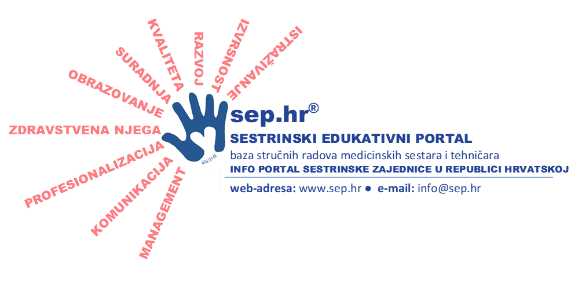Door Lauwaert
University Hospital Brussels (Belgium), EuSEN
emergency nursing, emergency department
''9. Međunarodni kongres HDMSARIST-a''
Šibenik, 04.-07. travnja 2016. godine
Historically, the modern hospital emergency room dates to the early 20th century. Its location within the hospital has evolved from a room in or near the operating suite to undesirable locations in the hospital basement (‘‘the pit’’) or admitting area, often remote from ambulance access, to dedicated and specifically designed areas. This is the finally transition from ER tot ED. Until joined in the early 70’s by dedicated emergency physicians, the emergency nurse had been both gatekeeper and linchpin of the ED, earliest and constant among its dedicated professionals. Emergency nurses provided operational ED leadership and administration (although often only recognized informally) long before stability and numbers were established in the ranks of emergency physicians. Despite occasional physician resistance, needed advance and change in ED policy and procedures were usually nurse-initiated. Historical latecomers to the ED have been dedicated emergency physicians. During the last three decades, they and emergency nurses have found themselves in an often undeclared partnership in development of their respective practices and hospital ED direction. Frequently uneasy, this partnership is bound by a common workplace and many common professional goals oriented to the welfare of the patient. In the USA In 1970, professional development was accelerated by the founding of the Emergency Department Nurses Association (EDNA), later renamed the Emergency Nurses Association (ENA). In other countries worldwide professional emergency nursing organizations were created to have emergency nursing recognized as a specialty, to share best practice with each other and to offer opportunities for learning and sharing knowledge. The definition of emergency nursing became: the care of individuals across the lifespan with perceived or actual physical or emotional alterations of health that are undiagnosed or require further interventions. Emergency nursing care is episodic, primary and typically acute and occurs in a variety of settings. The specialized body of knowledge and skills inherent in Emergency Nursing Practice provides a unique opportunity for the Emergency Nurse to serve as a focal point at the intersections of primary, secondary and tertiary care on the disease-wellness continuum. This collaborative enables the Emergency Nurse to affect the process and outcomes of concerns such as bioethical issues, Humanism, psychosocial and spiritual needs of clients, alternative care modalities, etc. in the nurse’s role as patient/client advocate. The current practice of emergency nursing is in a unique environment which includes unplanned situations requiring intervention, the allocation of limited sources, and the need for emergent care as perceived by many patients arriving in an unscheduled manner, potentially creating a stressful, chaotic environment. The services provided by the Emergency Nurse must be directed and structured to maximize the available time, space and resources within which the nurse functions. How do we as emergency nurses could set this in practice? The translation of the scope and the practice is anchored in the statements of the European society of emergency nursing as priorities concerning patient interest, competence and organization. The major question is now: what, in this terrible fast evolving world, will be the future of emergency care and most of all, what will be the drivers? Will it be: Costs, Quality, the coverage of all patients, the technology? The practice of emergency nursing has the promise of a robust future whose role will remain integral, evolving, and expanding. What will not change is the expectation by patients and their families that their emergency nurses
will be caring, supportive, and informative caregivers who, most of all recognize them as individuals. Nurses and physicians function in the ED together, and in most instances will be more effective approaching issues jointly. These relationships can be fostered by a number of joint activities and responsibilities. Emergency nurses and physicians could learn considerably more about each other’s professional roles by the development of ‘‘shadowing’’ exercises as part of team-building programs. At the national and international level we should encourage increased liaison of Emergency Nursing Organizations with the national and international physician organizations. Emergency physicians need to grasp that they play a key role in the workplace satisfaction of emergency nurses and accept them as true partners. It is clear that emergency medicine and emergency nursing take part in a brilliant concept of emergency care with mutual respect.
